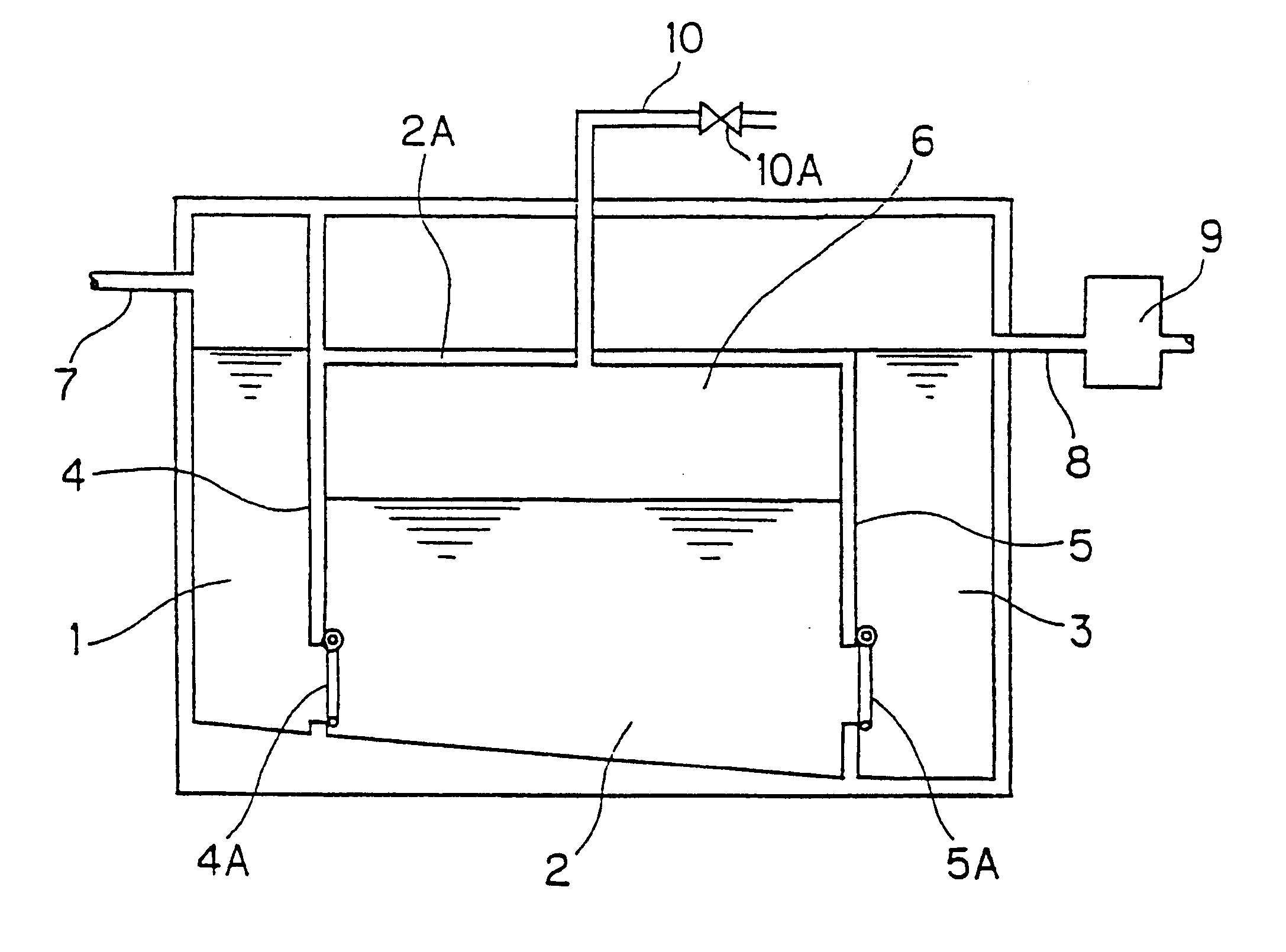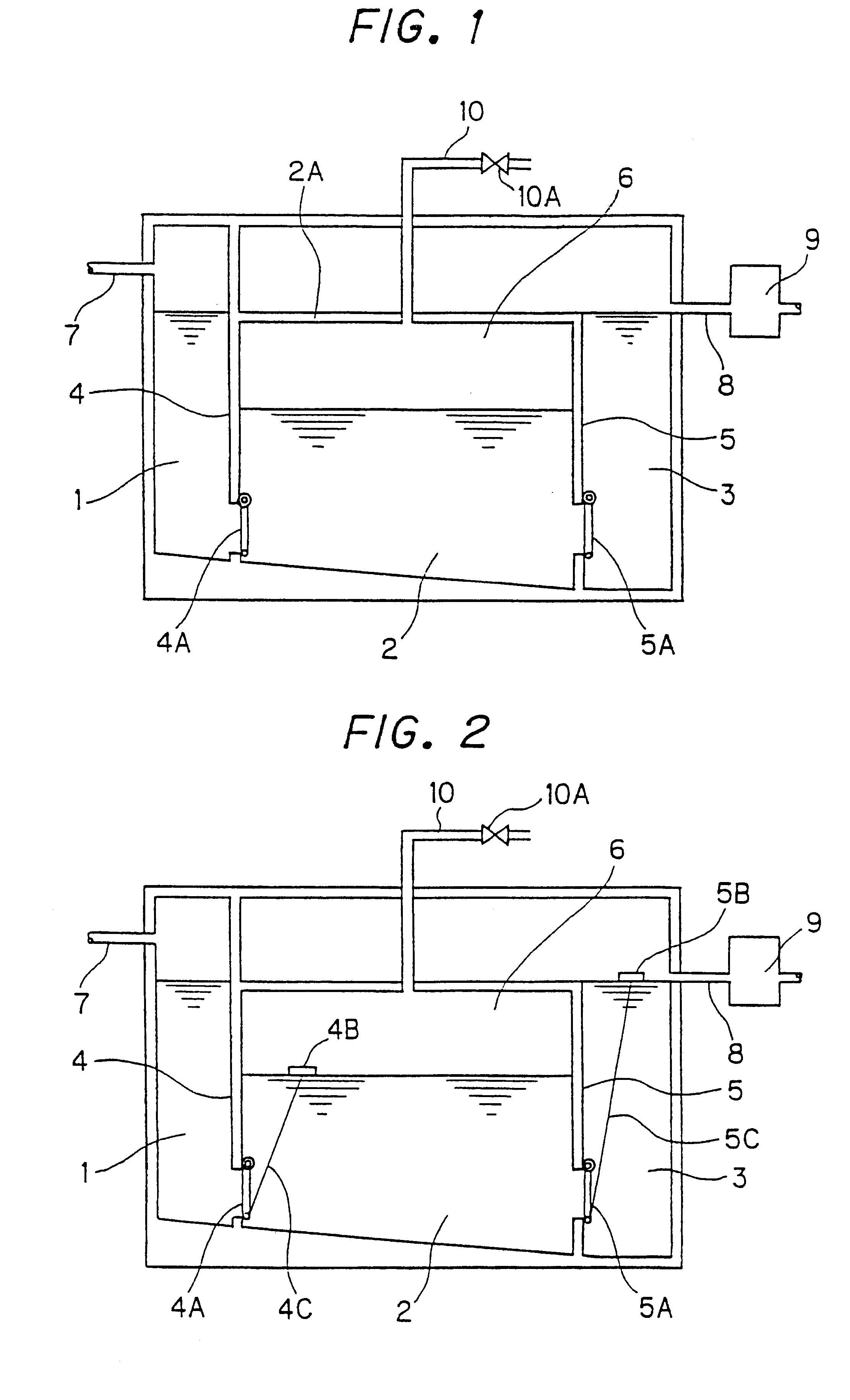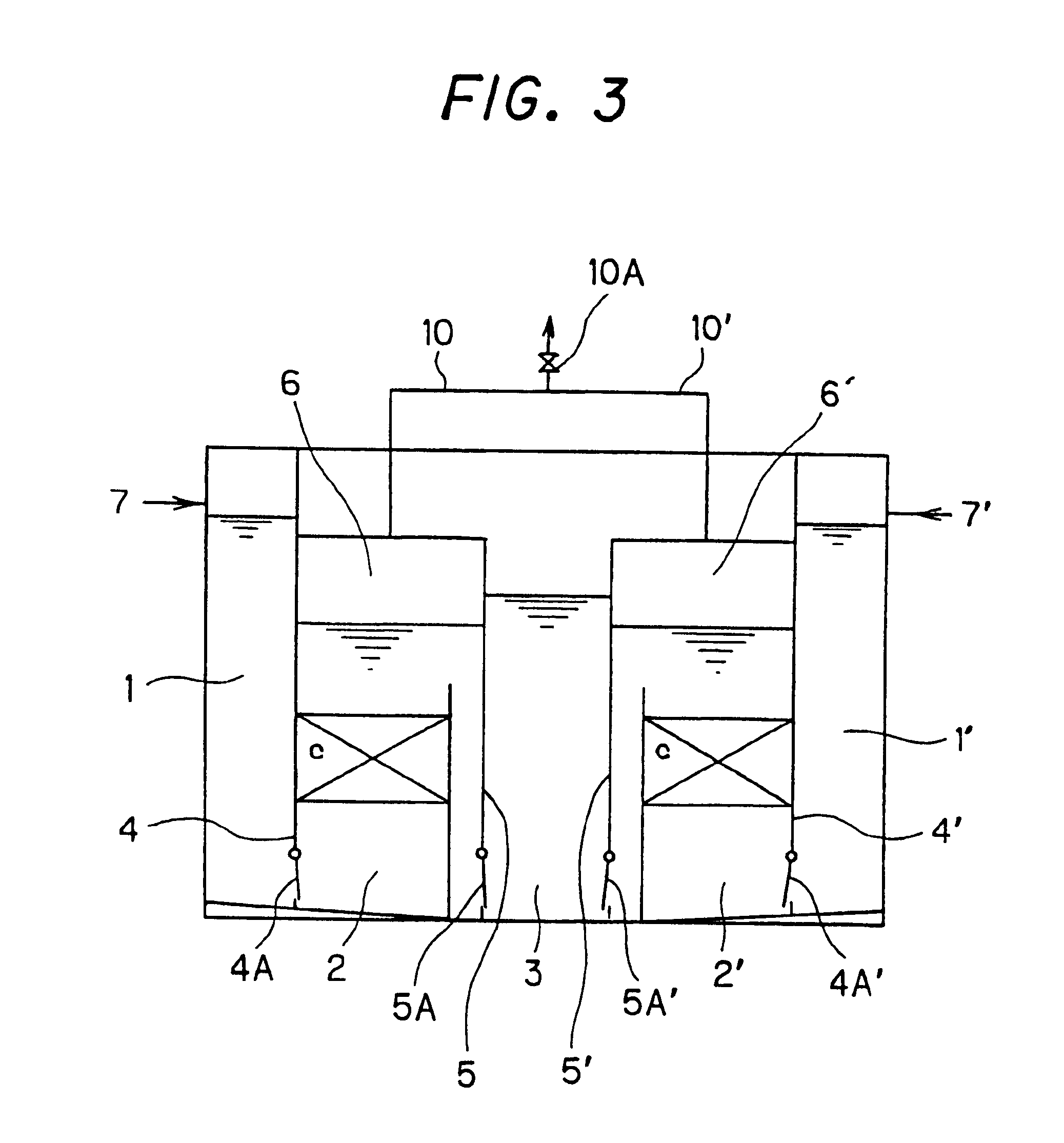Two-phase type methane fermentation reactor
a methane fermentation and two-phase technology, which is applied in the field of two-phase type methane fermentation reactors, can solve the problems of partial decrease of the activity or dissolution of methanogen microorganisms, decrease of the methanogen concentration in the methane fermentation tank, and decrease of the efficiency of methane fermentation, so as to achieve high efficiency and maintain high capacity with stability
- Summary
- Abstract
- Description
- Claims
- Application Information
AI Technical Summary
Benefits of technology
Problems solved by technology
Method used
Image
Examples
example 2
A test running for the treatment of swinery excrements was undertaken by using a reactor having a total volume capacity of 50 liters as illustrated in FIG. 3 under operating conditions including the liquid temperature of 20 to 22.degree. C., average retention time of 10 days and organic matter load of 3 kg-vs / m.sup.3 / day. The daily yield of methane gas was 50 to 65 liters per day.
example 3
A test running for the treatment of swinery excrements was undertaken in a system illustrated by the block diagram of FIG. 4 at an organic matter load of 4 kg-vs / m.sup.3 / day and average retention time of 10 days. The methane fermentation tank was loaded with a cylindrical tubular carrier of rock wool in a volume corresponding to 10% of the tank volume.
Following is an outline of the test running procedure.
The pig urine dripped through the gratings installed in the floor of the pig house 101 and was collected in the urine receiver 102 below. The urine was transferred therefrom to the feed tank 105 at a rate of 8 tons per day. On the other hand, the solid excrements were mounted on the cart 104 by means of a separating auger 103 and introduced into the feed tank 105 at a rate of 1.5 tons per day. Thus, the feed tank, which had a capacity of 21 tons, received the liquid and solid excrements at a daily rate of 9.5 tons. The feed tank 105 was equipped with an agitation pump (not shown in...
PUM
| Property | Measurement | Unit |
|---|---|---|
| oxidation-reduction potential | aaaaa | aaaaa |
| temperature | aaaaa | aaaaa |
| diameter | aaaaa | aaaaa |
Abstract
Description
Claims
Application Information
 Login to View More
Login to View More - R&D
- Intellectual Property
- Life Sciences
- Materials
- Tech Scout
- Unparalleled Data Quality
- Higher Quality Content
- 60% Fewer Hallucinations
Browse by: Latest US Patents, China's latest patents, Technical Efficacy Thesaurus, Application Domain, Technology Topic, Popular Technical Reports.
© 2025 PatSnap. All rights reserved.Legal|Privacy policy|Modern Slavery Act Transparency Statement|Sitemap|About US| Contact US: help@patsnap.com



